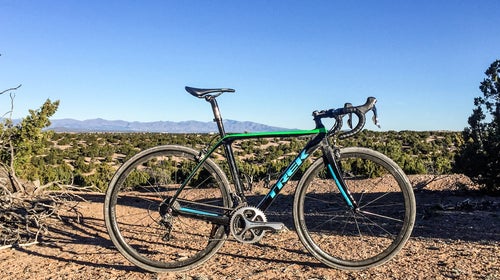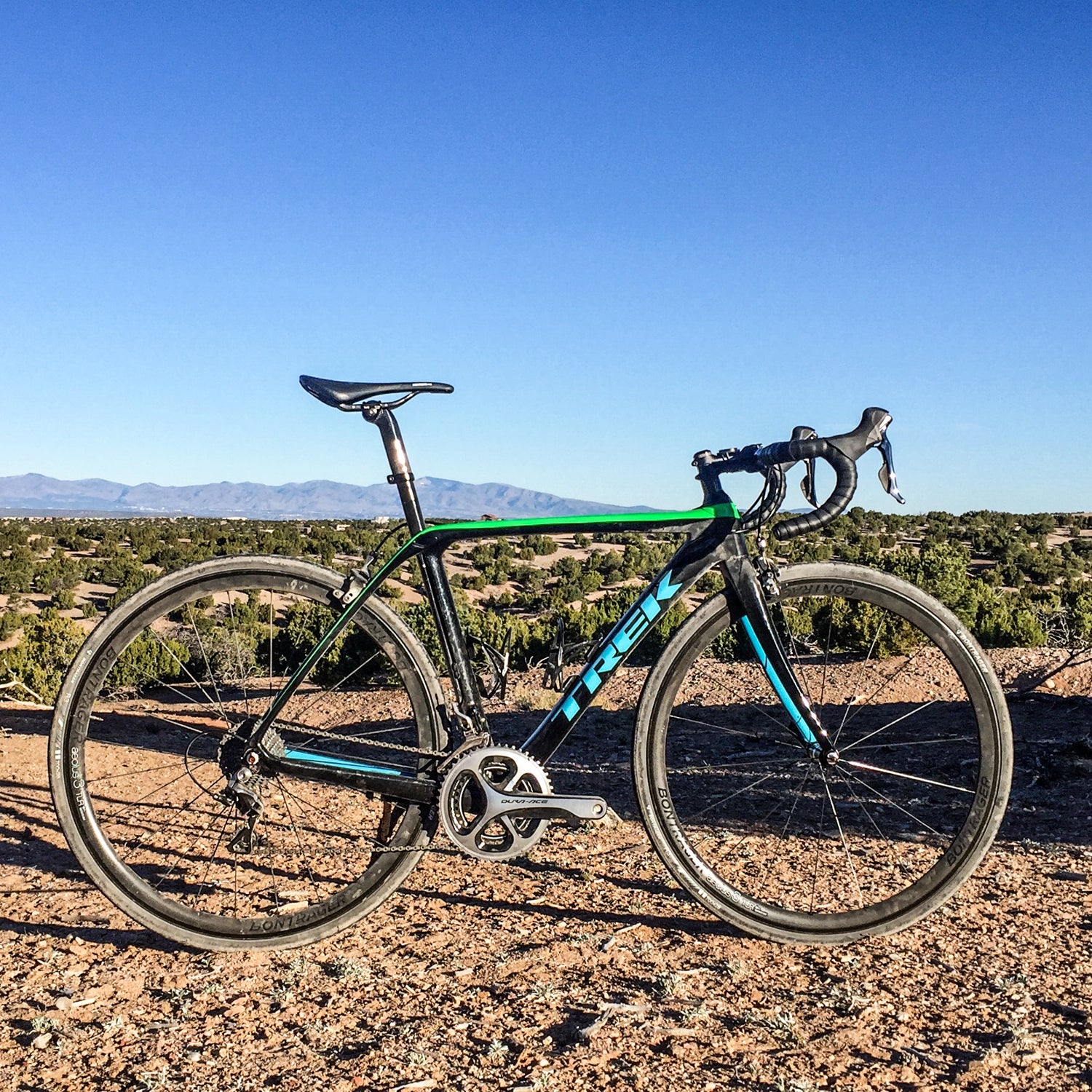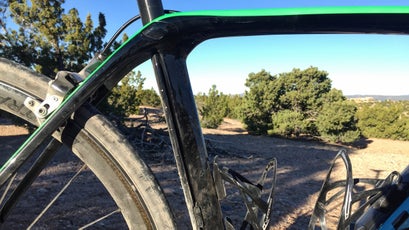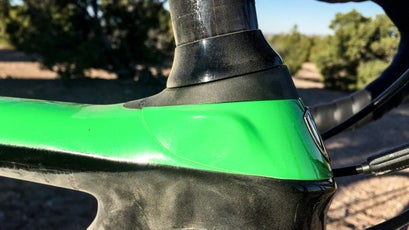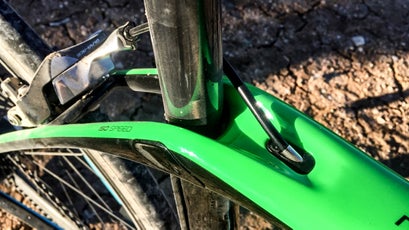On Sunday, Fabian Cancellara came achingly close to a win in his swan song appearance at the Tour of Flanders. In the end, the Swiss could only muster second place—25 seconds behind Peter Sagan—and his disappointment was palpable when he crossed the line.
Perhaps the only ones more disappointed than Cancellara was his crew from bike sponsor Trek, who used the race to publicly unveil the new . A victory on the bike would have been a ringing endorsement—though second at one of the world’s greatest one-day races is hardly bad, and it’s also worth noting that Cancellara already won Strade Bianchi aboard the machine earlier this spring.
Last week, we took possession of our own Domane SLR and can confirm that the bike is, indeed, a wild piece of engineering. This second iteration of the Domane, which was so good that it won Gear of the Year when it launched, takes that bike’s road-smoothing characteristics to a new, impressive level.
The Domane SLR uses a new twist on the IsoSpeed rear decoupler that Trek pioneered on the original, which the company says provides double the vertical compliance of a standard road bike without sacrificing power transfer. This new iteration of the decoupler, which allows the seat tube to move independently of the top tube so as to absorb road vibration, is now adjustable. As before, the seat post and seat tube are connected by a pair of bearings, but now there’s a slider tucked neatly between the two that moves up and down to tune the ride. At the lowest (softest) setting, the Domane SLR is now 14 percent more vertically compliant than the original. Yet you can also move the slider to it’s topmost position for a stiffer road feel. The design allows micro-adjustments for heavier or lighter riders, and it also allows for terrain-specific tuning, for instance stiffest on all-pavement rides and softest on gravel (or cobbles).
On first look, the Domane SLR seems like the ultimate all-around road bike, with performance characteristics that can win Pro Tour races and comfort for even the harshest terrain.
Trek has also added a decoupler at the front of the bike, which works like the rear by allowing the steer tube to flex independently of the head tube. The company says the Front IsoSpeed improves front end compliance by 10 percent over the previous Domane. There’s also a new handlebar, which weaves a layer of thermoplastic elastomer inside the carbon shell of the bars to improve vibration damping by a claimed 20 percent. These two fixes address the only real criticism we had of the original Domane: the extraordinarily comfortable rear end amplified the stiff and aggressive front end of the bike.
Best of all, the Domane SLR will come in a standard rim-brake model, as well as a disc-equipped version, which reflects the technology’s spread in the pro ranks. Cancellara didn’t race the disc SLR, however many riders were on discs, including the full Lampre-Merida squad, marking the  an entire team started a Pro Tour level race with the technology. Beyond just better braking, another advantage of the disc model is that it has clearance for 32-millimeter tires as opposed to just 28-millimeter ones on the rim version. If we have one initial criticism of the SLR, it’s that Trek didn’t build in clearance for even bigger rubber.
Our tester is the rim-brake model built through Trek’s custom Project One program, with a custom paint job, full Shimano Dura Ace group set, and Bontrager carbon Aeolus 3 TLR clincher wheels hung with 28-millimeter R3 tires. It tips the scale at a feathery 15.3 pounds, challenging the idea that comfort bikes can’t also be light and fleet.
We’ve ridden the bike twice now, once on a short pavement loop and yesterday on a six-hour mixed-terrain epic over two mountain passes that included about 50 miles of dirt, sand, rocks, and washboard. The SLR definitely feels cushier than the previous version, especially up front where the decoupler and the bars really take the edge off high-frequency vibration. We rode alongside friends aboard carbon gravel bikes with 42-millimeter tires and still had no issue keeping up, even on the most rugged, washed-out terrain. Meanwhile, on the road spin the day prior, we definitely noticed a big difference in rear stiffness by upping the slider to its most rigid position.
These, of course, are just initial impressions, and we look forward to putting the bike through a comprehensive, robust test, especially to see how the new decoupler design holds up to dirt and grit. On first look, however, the Domane SLR seems like the ultimate all-around road bike, with performance characteristics that can win Pro Tour races and comfort for even the harshest terrain. Cancellara will have another chance this Sunday to prove the bike’s mettle when he takes on Paris-Roubaix for the last time.
The Domane SLRÂ is on sale now and available in five stock models, including two disc, from the SRAM eTap-equipped SLR9 for $11,000 down to the Shimano Ultegra-built SLR6 for $5,000.
